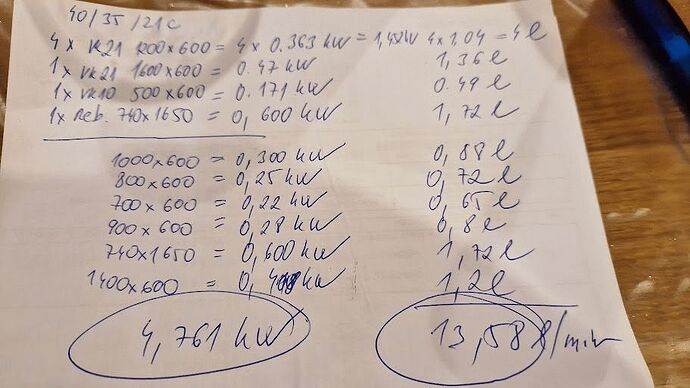Hi Experts,
Can anyone explain this behavior (I’d call it dumb) in water law a.k.a. weather compensation mode. It looks weird to me because I’ve noticed some strange behavior in this mode. Seems that for any reason the internal logic decides to stop the compressor it is always stopped for 3 minutes and 15 seconds.
For life of me I can’t understand this logic. It’s clear when there is hot outside and demand for home is lower the pump cannot deliver the heat even at lowest power output but why for the god sake it always stops only for 3 minutes and then start again ? Why it is not stopped longer.
Let’s say there is 10C or 15C outside and the minimal pump output is 3KW and the demand for heat is less than 2KW then ofc the pump stops at some time since it can’t transfer more hear to water to satisfy dT. But ALWAYS only for 3 minutes! so it happened that it cycles 6x in an hour like crazy. What a stupid logic. If I see (software logic) that those interval are very short because probably the heat demand is very low and there is hot outside and radiators can’t transfer it then I will keep the compressor of for 15 or 30 minutes so the radiators (water in the system can cold out) and only then start it again so it can run for much longer. But no, Samsung HP will switch it off always for appx. 3 minutes and then it runs for 5 minutes and again it stops for 3 and all over again.
Am I stupid or I’m missing something here? Can someone explain?
When I switch to indoor thermostat mode then it works until desired temperature is reached and wait for and indoor temperature drop by 1C (this is also stupid this hysteresis cannot be changed because 1C is just too much, 0.5C would be much better). So then the pump in warmer weather is off for hours saving electricity.
In weather low no, it is able to cycle 6x in an hour consuming lot of energy for this and of course overheating. I really don’t understand this logic, isn’t there somethin where I can say wait for damn 30 minutes or so when the compressor turn off just because too much heat generated by the pump ?
To me it looks like this weather law mode is useless in warmer weather conditions. It works good until around 3C when there is no need to turn the compressor of and reach desired temperature and then it starts doing these cycles the more often the warmer weather there is.
Seems the only solution is to switch to indoor thermostat regulation and live with this or can I do something else ? Also I’ve noticed that in water law mode the consumption is slightly bigger than in indoor temp mode. Seems in indoor temp the compressor speed can go lower.
Here’s the graph when outside was 7C this night. This cycled only 5x but you can see always 3 minutes. Where is these 3 minutes from and why ?
This is a graph from yesterday when there was similar outside temperature and it hasn’t cycle once during night. It was maintaining a minimal speed and switched only at 1PM. Then it was off until 8PM. I’ve switched to water law mode and this 3 minutes cycling started.
Thanks for isights.


